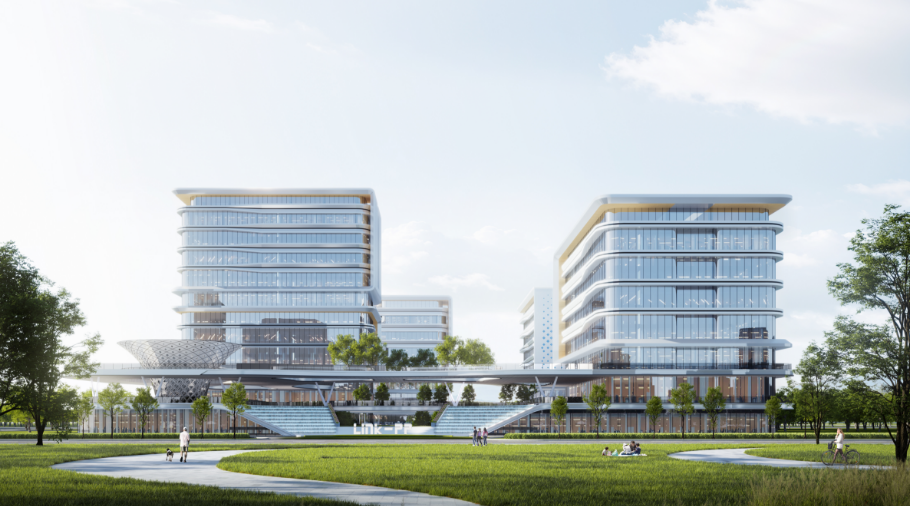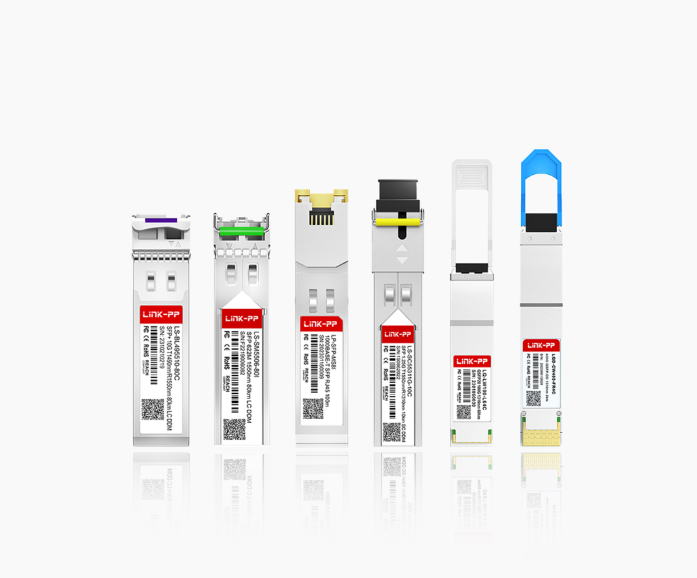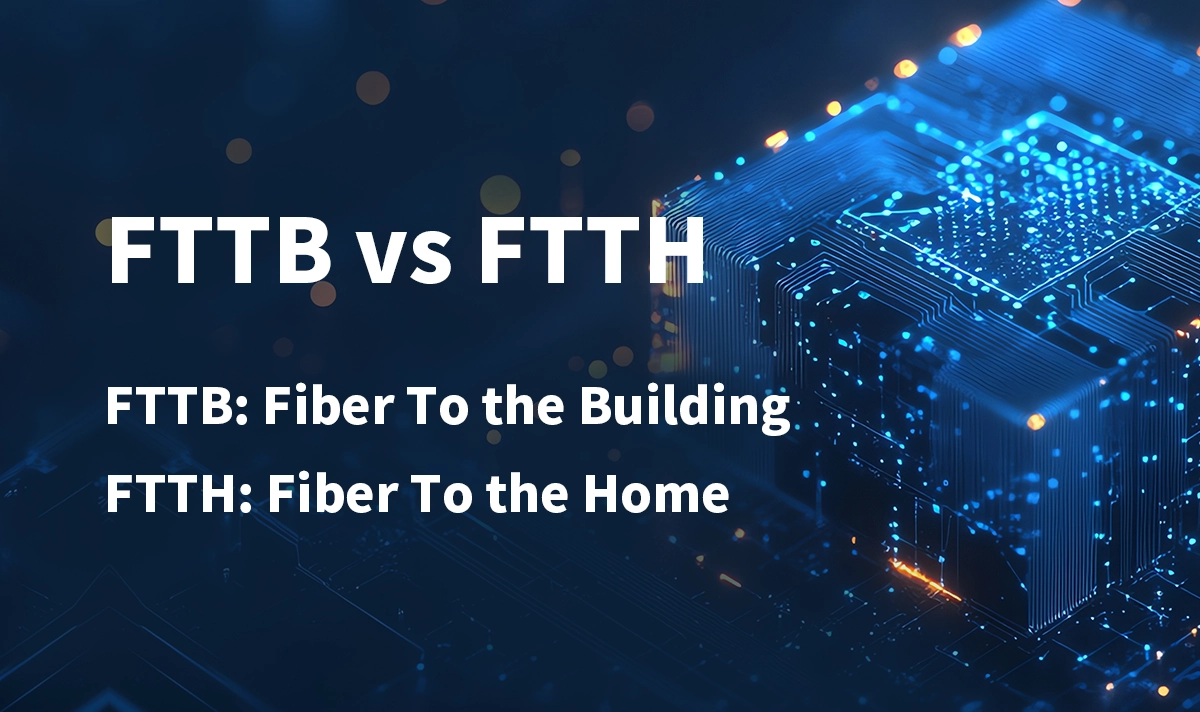
Introduction: Why Fiber Network Architecture Matters
As global internet consumption increases with 4K video, cloud computing, IoT, and smart home applications, fiber-optic access networks have become essential infrastructure. Two of the most widely deployed fiber architectures are FTTH (Fiber to the Home) and FTTB (Fiber to the Building).
Though similar in principle—delivering broadband through optical fiber—they differ significantly in physical layout, performance, cost, and ideal use cases. Understanding these differences is crucial for service providers, developers, and network engineers planning next-generation access networks.
What Is FTTH (Fiber to the Home)?
FTTH is a full-fiber solution in which the optical fiber runs directly from the central office (CO) or optical line terminal (OLT) to the customer’s home. There are no copper or coaxial segments between the CO and the user.
✅ Key Characteristics:
Fiber Endpoint: Inside the residence
Last Mile Medium: 100% optical fiber
Bandwidth: high-speed (Typically providing between 1 and 10 Gbit/s)
Interference: Minimal, immune to EMI/RFI
Installation: Requires trenching, conduit work, and optical network terminals (ONTs) inside the home
📦 LINK-PP Product Highlight:
LINK-PP's SFP+ transceivers (LS-BL332710-10C) are ideal for FTTH deployments, providing stable upstream/downstream performance and support for dense residential networks.
What Is FTTB (Fiber to the Building)?
FTTB delivers fiber to the basement or communication room of a multi-dwelling unit (MDU) or commercial building. From there, Ethernet cables (Cat 5e/6), coaxial cables, or even existing copper wiring distribute the connection to individual units.
✅ Key Characteristics:
Fiber Endpoint: At the building’s shared telecom cabinet
Last Mile Medium: Copper or Ethernet
Bandwidth: Limited by in-building wiring quality (typically up to 1 Gbps)
Interference: Susceptible to signal degradation in older wiring
Installation: Lower cost than FTTH; uses existing infrastructure
Note: Typically up to 1 Gbps, depending on the building’s internal cabling quality and distance. Some newly constructed or high-grade cabling (e.g., Cat 6/7) can support higher speeds over short distances, exceeding 1 Gbps.
📦 LINK-PP Product Highlight:
LINK-PP provides high-Performance 1G/2.5G SFP optical transceivers, which are perfect for terminating fiber at the building level and distributing service through Ethernet switches or DSLAMs.
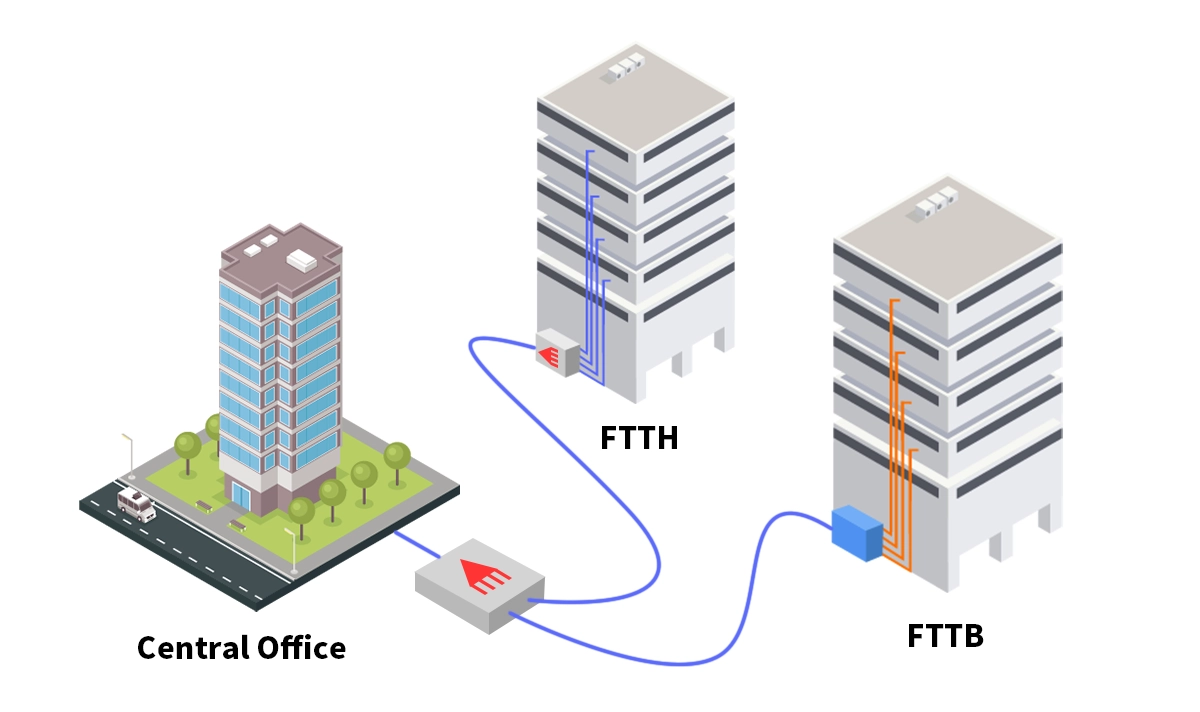
Comparison Table: FTTH vs. FTTB
Feature | FTTH | FTTB |
|---|---|---|
Fiber Termination Point | Inside the home | Building communication room |
Last Mile Medium | Optical fiber | Copper, coaxial, or Ethernet |
Typical Use Case | Suburban homes, new developments | Apartments, offices, urban MDUs |
Speed Potential | Up to 10 Gbps (XGS-PON) | Typically 100 Mbps – 1 Gbps |
Installation Cost | Higher (new fiber drop required) | Lower (uses existing internal wiring) |
Reliability & Latency | Very high reliability and low latency | Moderate, depends on copper condition |
Interference Resistance | Excellent | Limited by copper performance |
Which Is Better: FTTH or FTTB?
There is no one-size-fits-all answer—each architecture suits different deployment environments:
FTTH is the preferred long-term solution for greenfield developments or areas with heavy digital service demand.
FTTB offers faster time-to-market and cost savings in existing buildings, especially in densely populated cities.
In many countries, service providers use a hybrid approach, gradually upgrading FTTB networks to full FTTH over time.
How LINK-PP Supports FTTH and FTTB Networks
As a global supplier of high-performance optical communication components, LINK-PP supports both FTTH and FTTB architectures through:
SFP, SFP+ transceivers for various PON systems.
Custom RJ45 Magjacks for high-density FTTB equipment.
Industrial-grade Magnetics for outdoor cabinets and in-building telecom rooms.
Long-reach, low-power, and temperature-hardened Optical Modules for reliable performance in challenging environments.
Explore LINK-PP’s full product line at l-p.com to find the right optical transceiver for your fiber access network.
Conclusion
Both FTTH and FTTB play important roles in expanding fiber connectivity. While FTTH offers the best performance and future scalability, FTTB remains a practical and cost-effective option in many urban environments.
With LINK-PP’s advanced optical transceiver solutions, you can build future-ready networks—whether you're lighting up an entire neighborhood or upgrading a single building.
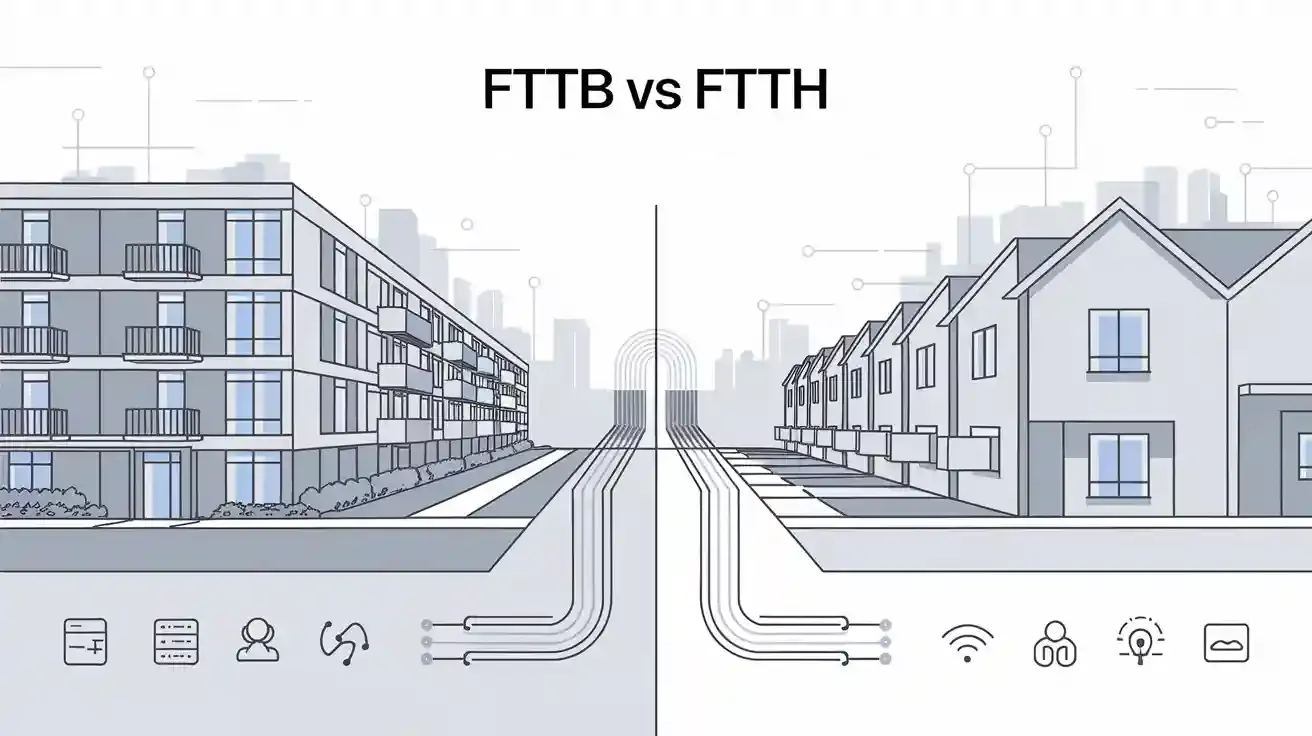
FAQ
What is the main difference between FTTB and FTTH?
You get fiber to your building with FTTB. FTTH brings fiber directly to your home. FTTH usually gives you faster speeds and better reliability.
How can I determine whether my building or community is better suited for FTTH or FTTB?
The suitability depends on factors such as existing cabling infrastructure, building age, and expected bandwidth demand. If your building has modern fiber-ready conduits and supports in-building fiber routing, FTTH is ideal. For older buildings with copper Ethernet or coaxial cabling, FTTB may be more practical and cost-effective, especially if the last-mile upgrade is not feasible.
Is it possible to upgrade from FTTB to FTTH later?
Yes, but the upgrade depends on the physical infrastructure. Transitioning from FTTB to FTTH may involve rewiring inside the building to replace copper with fiber, installing fiber distribution frames, and upgrading ONUs/ONTs. The feasibility and cost vary based on the number of units and existing ductwork.
Which is better for gaming and streaming, FTTB or FTTH?
You should choose FTTH for gaming and streaming. FTTH gives you lower latency and higher speeds. FTTB may share bandwidth with others in your building.



